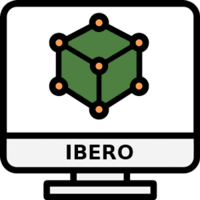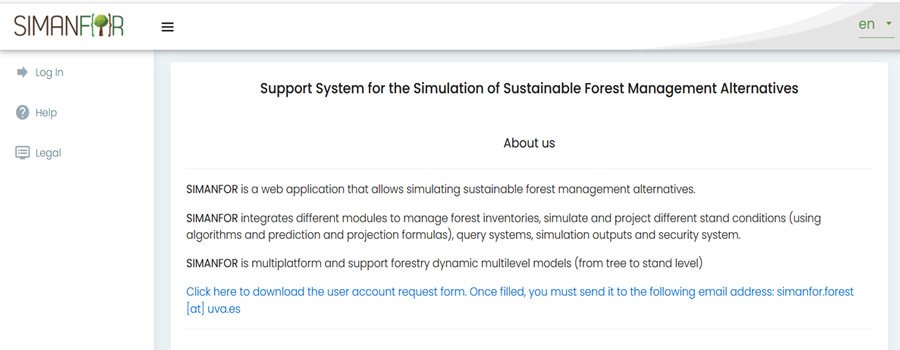IBERO

A forest growth model to analyze the effects of management options at the tree, size class and stand level, providing relevant information on ecosystem services provision.

IBERO is an individual tree distance-independent growth model parametrized for the most relevant forest species in Spain. IBERO runs over the SIMANFOR platform, where management interventions can be simulated (different types of thinning with alternative timing and intensity.. By simulating different silvicultural paths (thinning timing, type, intensity, and rotation age) managers can insight into forest stand dynamics and response to silviculture. Demography, by self-thinning factors depending upon climate is included for most of the species.
In OptFORESTS, we use IBERO for innovative management alternative co-designing and testing with stakeholders. Different options and targets are considered in designing silvicultural paths to cope with climate change. We will run a stand-level analysis covering the main forest types in our region. Outputs will reflect the different management alternatives and the shift in forestry objectives.
Main model information
IBERO runs over SIMANFOR and can be used for intensive simulations thanks to the access to High Performance Computers.
It can be used for:
- Exploration and assessment of management options
- Estimation of ecosystem services
- Research, teaching and training
Pinus halepensis, Pinus nigra, Pinus pinaster, Pinus pinea, Pinus sylvestris, Pinus uncinata, Fagus sylvatica, Quercus faginea, Quercus ilex, Quercus petraea, Quercus pyrenaica, Quercus robur, Quercus suber in pure and mixed stands
Rotation forestry with single- or multi-species stands, modules for Continuous Cover Forestry are being implemented
Felipe Bravo, Universidad de Valladolid (Spain)
felipe.bravo@uva.es and simanfor.forest@uva.es
Additional model description
- Distant, independent tree growth models (height & diameter)
- Growth response to silvicultural interventions
- Mortality/survival probability due to competition and climate-dependent self-thinning line
- Initial forest inventory (tree list)
- Management scenario
- Tree size
- Timber products and biomass
- Carbon storage
- Biodiversity value (from deadwood)
List of References
- Bravo, F. (2005). Dinámica de rodales de pino negral (Pinus pinaster Ait.) en el Sistema Ibérico Meridional: Estructura genética, regeneración y dinámica forestal. Zenodo. https://doi.org/10.5281/zenodo.11621952
- Bravo, F., & Montero, G. (2003). High-grading effects on Scots pine volume and basal area in pure stands in northern Spain. Annals of forest science, 60(1), 11-18. https://doi.org/10.1051/forest:2002069
- Bravo, F., Rodríguez, F., & Ordóñez, C. (2012). A web-based application to simulate alternatives for sustainable forest management: SIMANFOR. For Syst 21 (1): 4–8 https://doi.org/10.5424/fs/2112211-01953
- Bravo, F., Ordóñez, C., Vázquez-Veloso, A., Michalakopoulos, S. (2024). Design, structure, applications and evaluation of SIMANFOR, a cloud decision support system for the simulation of forest management alternatives in preparation.
- Rodríguez de Prado, D., San Martín, R., Bravo, F., Herrero, C. (2020). Potential climatic influence on maximum stand carrying capacity for 15 Mediterranean coniferous and broadleaf species. Forest Ecology and Management 460:117824 https://doi.org/10.1016/j.foreco.2019.117824
- Vázquez-Veloso, A., Pando, V., Ordóñez, C., Bravo, F. (2023). Evaluation and validation of forest models: Insight from Mediterranean and Scots pine models in Spain. Ecological Informatics 77:102246 https://doi.org/10.1016/j.ecoinf.2023.102246
